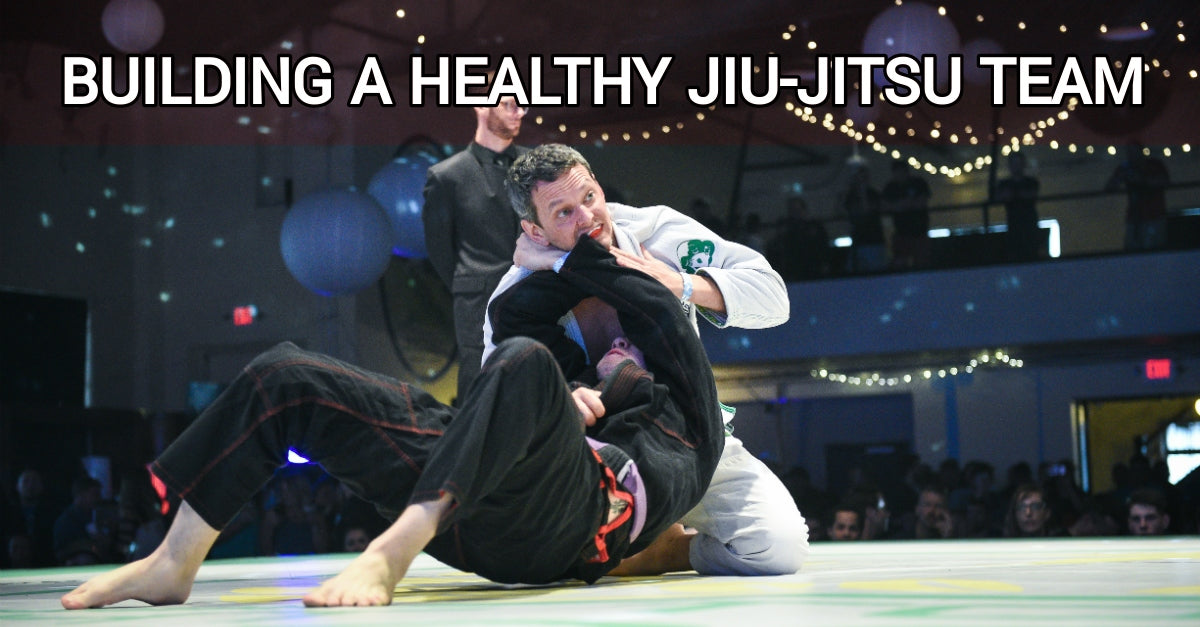
Building a Healthy Jiu-Jitsu Team
In many sports, the idea of a team is a clean-cut concept of shared success and responsibility. If you are on a soccer team, every player has to work together to win a game. That means communication, support, and collaboration. Each player is a part of a whole, and if a team loses a game, some breakdown in teamwork is often to blame.
For sports where athletes compete as individuals, such as wrestling, the idea of a team is still present, though its application is different. The individual competes alone. She can’t pass the ball to another player or blame the fullbacks for being out of position if the game goes wrong. Instead, the role of the team is to help each other prepare for competition. They workout together. They train together. They push each other.
We want all of these elements of a “team” to apply to jiu-jitsu, but I fear that we use the term so casually that we overlook opportunities to actually function as a team. Instead, it becomes some abstract marketing tool and a way to sell t-shirts, and that’s where we stop.
Here’s what makes the idea of a jiu-jitsu team more difficult to realize:
- Attendance is less consistent and not all students compete
- Students have varying goals and intensity levels
- Few instructors actually teach students how to be a team
If you join a wrestling team, most of this comes automatically. You signed up for wrestling to compete. The season has a clear start and stop point. As far as what it means to be a team, the structure is simpler than the open-ended nature of a membership at a jiu-jitsu school.
Without that clear structure, the idea of a “team” in jiu-jitsu can start to unravel. In the context of our sport, we have to be more mindful of what makes a team successful and our roles within it because of how different the environment of jiu-jitsu can be. For us to realize the best aspects of a team—support, collaboration, and so on—we have to put in extra work to nurture and maintain the team.
We should be thinking about the following:
- Each team member needs to be supported equally. Even if a student has no intention of competing, they should be given the same level of support and attention as the ultra-competitor. Otherwise, you begin to create a class structure within the team, and that breeds conflict (which undermines the cohesiveness of a team).
- In supporting each other equally, being a good training partner should be a regular part of the discussion. That can mean instruction on how to drill, roll, and how to behave when a team member is preparing for a competition. On the most basic level, teammates need to keep each other healthy. On higher levels, teammates need to give each other the right resistance at the right time to stimulate growth.
- A jiu-jitsu team is not an exclusive club as long as anyone can sign up for a membership. If welcoming new students and meeting them where they are in terms of skill and athleticism is not a part of how your team behaves, eventually the team will atrophy. Traditional sports recognize the idea of growing the junior varsity players, but that concept can be hard to apply when a brand new student steps into a gym where some members have been training together for ten years or more. If new students are left out of the fold, however, the fold will shrink.
- Team loyalty is a two-way street. If you cannot strike a balance with your students where they get as much as they give, you will eventually undermine the cohesiveness of a team. This means that students can be asked to make small sacrifices (spending a class working with a new student, staying after class to mop the mats), but that can’t be a one-way street. For a team to grow, every member has to be invested in supporting the team. If any member does nothing but make withdraws from that bank account of goodwill, whether they are an instructor or a student, eventually the account will be empty.
Building a healthy, productive team is a never-ending process, and that process warrants a book-length discussion on culture, leadership, and coaching. This is a good start, though.
What do you do to keep your jiu-jitsu team moving in the right direction? Share your thoughts in the comments below.
Other articles:
Quick links
Contact us
About us
Quality BJJ gear at fair prices, available all year. Founded in 2012 to provide an alternative to high-cost, limited edition gis. Dive into the BJJ lifestyle with us—join the Panda Nation!"
